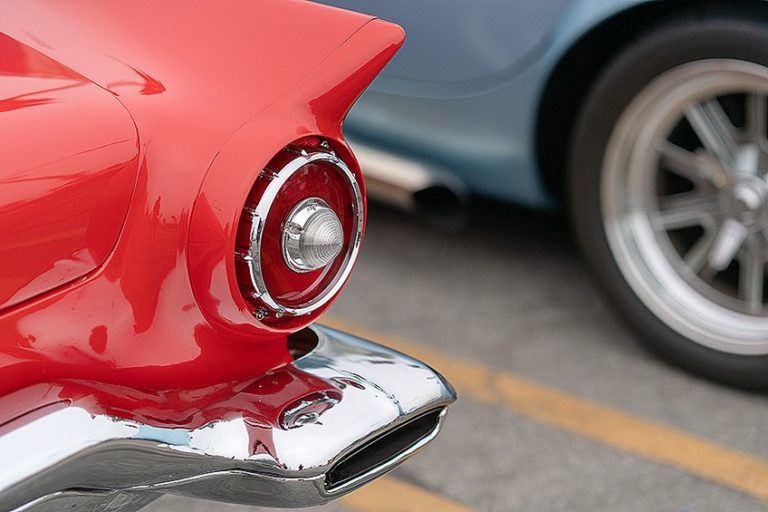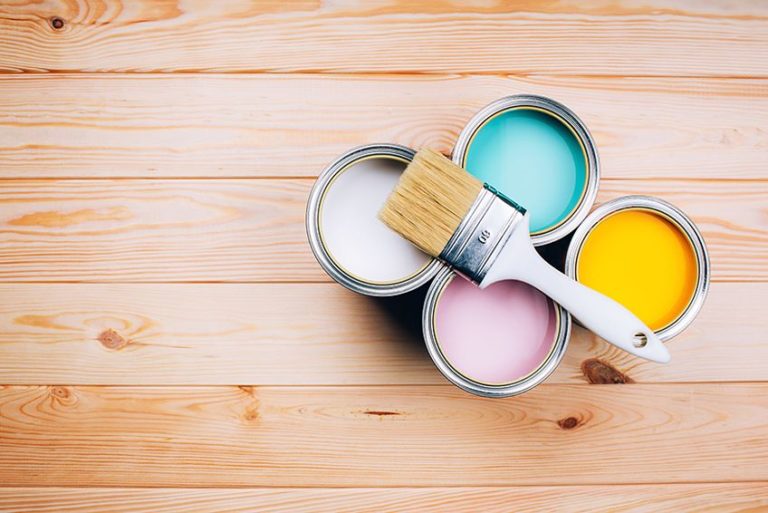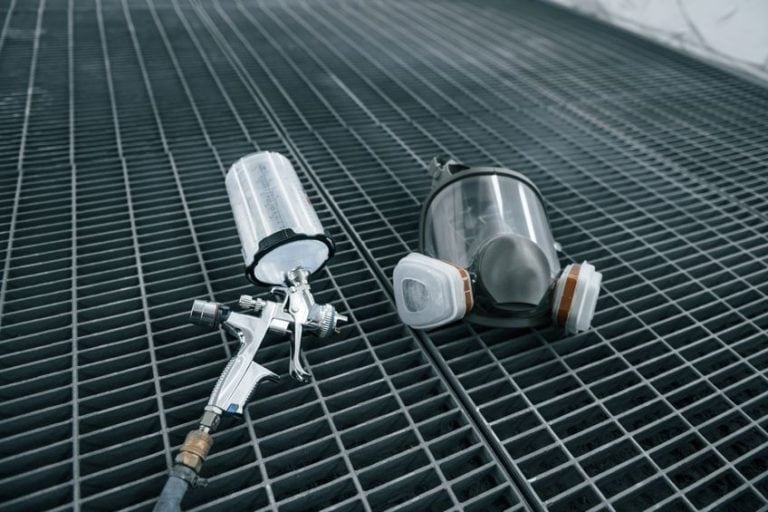How to Clean Oil Paint Brushes – The Best Way to Clean Paint Brushes
This post may contain affiliate links. We may earn a small commission from purchases made through them, at no additional cost to you.
Whether you are painting your bedroom wall or creating a canvas masterpiece, painting should be a fun and enjoyable experience. And it is – until you have to clean everything up, including the brushes you used. You could simply toss the brushes into the bin; however, paintbrushes can be quite expensive, and you want to make sure you look after them. When it comes to cleaning oil paint brushes, it might be more of a process when compared to simply rinsing with water. When you clean oil paint brushes, most of us have used turpentine or thinners. However, there are other methods, and we will be taking a look at these as well as the traditional ways of cleaning oil paint brushes.
Table of Contents
- 1 Types of Paintbrushes
- 2 Looking at the Best Ways to Clean Paint Brushes
- 3 Oil Paint Brush Cleaner Product Recommendations
- 4 Paint Brush Cleaner Tips
- 5 Frequently Asked Questions
- 5.1 Is Cleaning Oil Paint Brushes with Vinegar Possible?
- 5.2 Can You use Coconut Oil as a Paint Brush Cleaner?
- 5.3 What Happens if You Clean Oil Paint Brushes Using Water?
- 5.4 Are Mineral Spirits and Turpentine the Same Product?
- 5.5 Are Paint Thinner and Mineral Spirits Similar?
- 5.6 How to Clean Dried Paint Brushes?
Types of Paintbrushes
Let us briefly consider the types of brushes available, not the shape or size but the actual make-up of a paintbrush. There are two main types of paintbrushes, the natural kind, and the synthetic brushes. Natural brushes have animal hair, are softer, and will manage oil paints better. Synthetic brushes are made from polyester or nylon, making them better for used with water-based latex paints. You can use synthetic brushes for oil painting, but using paint thinners or cleaners will affect the bristles.
Natural hair paintbrushes offer better quality, should last longer, and cost more than their synthetic counterparts. Then again, a synthetic brush will not last as long, but it is cheaper. When out shopping for brushes, you can check the quality of a brush simply by gently tugging at the bristles.
If you notice quite a few of the bristles coming off, rather search for another higher-quality brush. Sometimes paying a little more for something will save you in the long run. Today, you can most probably find a synthetic brush that can handle oil paints. Just make sure that when you make your purchase, it mentions that it is for oil paints.

Looking at the Best Ways to Clean Paint Brushes
There are a number of ways in which you can go about cleaning oil paint brushes. You can use chemicals such as turpentine or mineral spirits, go the natural route, or you can opt for at-home solutions by using household materials. We will look at all of these options in detail below.
Cleaning Oil Paint brushes with Turpentine or Mineral Spirits
Using turpentine or thinners is the more traditional method of cleaning oil paint brushes. While this method does work, there are a few disadvantages when using these products. One of the main problems is exposure to toxic fumes, which is something you do not want to do regularly.
Clean Oil Paint Brushes Using Turpentine
First, let us look at what turpentine is. This smelly fluid is obtained through a distillation process of resin from a pine tree. The resulting solvent is then used for thinning and cleaning oil-based paints. Turpentine also forms a part of varnishes and is used as a raw material for other purposes. A mixture of carnauba wax or beeswax and turpentine has been used as furniture wax for many years.
Unfortunately, turpentine is toxic and gives off a strong odor. The fumes can irritate the eyes, skin, and lungs if breathed in. Disposing of turpentine is also a problem – you cannot throw it down the drain, so you have to treat and get rid of it as hazardous waste. This is why many seek alternatives to turpentine that are safer to use and also better for the environment. Containers should also be properly labeled and stored out of reach of children.
First and foremost, when working with solvents you should always take your safety into account. So, wearing gloves and a mask is a good idea. Also, working in a well-ventilated space is important. Now, let us have a look at how to clean oil paint brushes using turpentine. You will need:
- Turpentine
- Newspaper
- Two small buckets or glass jars, depending on the size of your brushes
- Old rags
- Mild dish soap
- Paintbrush spinner (a handy tool available on Amazon; see product recommendations below)
You should clean your brushes straight after you are finished with them. The brushes should also not be soaked, as this could damage the bristles. You should always check the paint manufacturer’s directions for what type of paintbrush cleaner is best.
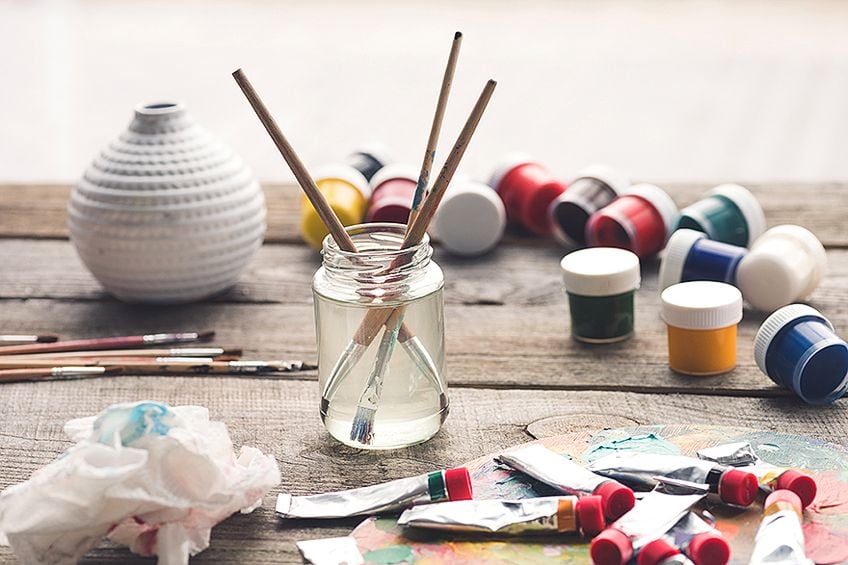
Step 1: Remove any excess paint by lifting and sliding the brush out along the paint can rim, or use an old rag or a piece of paper towel. You can also use newspaper to remove any excess paint.
Step 2: Here, you can use a bucket or glass jar. Fill this with some solvent and then dip or stir your paintbrush through the solvent. If working with turpentine or any other harsh chemicals, be sure to wear gloves. You can use your gloved fingers or a paintbrush comb to help remove any stubborn paint. Some recommend using the paintbrush spinner and then dipping the brush again into some clean solvent before spinning again.
Step 3: Fill the second bucket with some warm, soapy water and wash out any remaining paint. Shake the brush and dab lightly with a rag or onto the newspaper. Here, you can also use a paintbrush spinner, which will remove any water much more effectively.
Step 4: You can then gently re-shape the brushes and store them by hanging them up or keeping them flat on the surface. Once dry, you should re-wrap the brushes in their packaging or use heavy paper to wrap around the brush. This will help to keep the shape of the brush.
Note: Leave the turpentine or mineral spirits until all the paint solids have sunk to the bottom of the bucket or jar. Pour the rest of the solvent into another container. The paint solids should dry outside and then you can dispose of them as hazardous waste. Also, if you use rags when dealing with any of these cleaning methods, remember to dispose of these properly. If left, the used rags could be a fire hazard. Soak the rags in water and keep them in a sealed metal container before disposing of them properly.
Mineral Spirits and Cleaning Oil Paint Brushes
The actual cleaning process is similar to that of using turpentine, and the same goes for any other solvents used. How to clean dried paint brushes? Mineral spirits might also be a good choice to soften dried paint.
We are mainly going to deal with what mineral spirits are and compare them to paint thinners. Are these two the same and do they offer similar results? Mineral spirits come as a petroleum-based clear liquid that does not contain any additives and is not blended with anything else. This type of solvent is used as a paint thinner and cleaner, helping to clean fresh and unused paint.
Today, mineral spirits have been refined to be odorless, which is why it can be used in oil painting. Mineral spirits can be an irritant to the skin and lungs, however, it has fairly low toxicity. Since it is still a solvent and considered a hazardous material, it should be used with caution. Similar to turpentine, you should wear a mask and gloves, and work in a well-ventilated area. Mineral spirits are also known as paint thinners, but not all paint thinners are mineral spirits.
Paint thinner is a general term for the product’s function and does not refer to its composition. A paint thinner can contain any number of blended products, including mineral spirits, turpentine, naphtha, and acetone, amongst others.
Even if the paint thinner does contain mineral spirits, it is not the same as the refined mineral spirits with low odor and toxicity. Both the refined and blended mineral spirits do offer less odor and toxicity than most other paint thinners, however. The pure or refined mineral spirits cost you more than the blended paint thinners that contain additives.
Paint thinner, in general, can be used as an oil brush cleaner or to thin paint. However, mineral spirits seem to work better as a paint thinner due to slow evaporation. The thinned paint also dries smoother and more evenly when compared to other paint thinners that evaporate more quickly. Mineral spirits can also be used to remove substances like paint and tar from a variety of surfaces without causing damage.
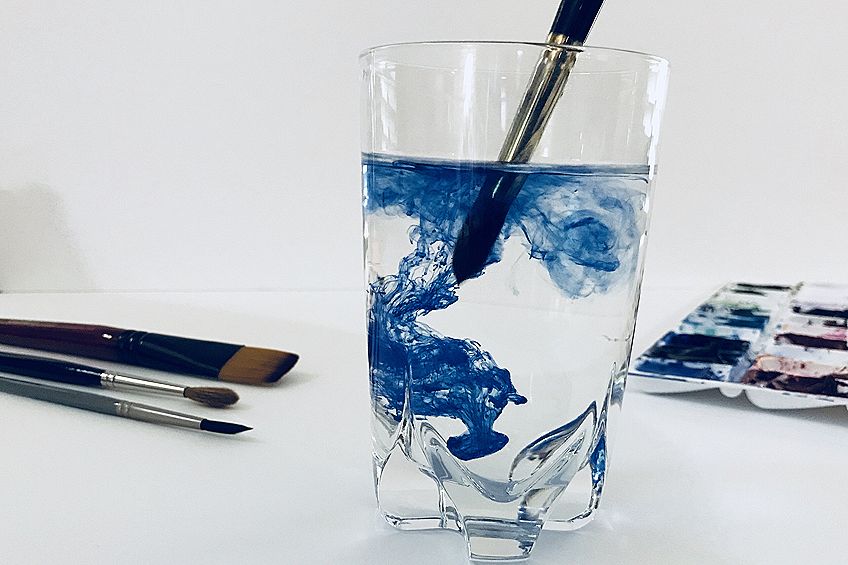
How to Clean Oil Paint Off Brushes Naturally
When painting, you must regularly clean your brushes, as you do not want to expose yourself unnecessarily to toxic chemicals. Some may only use paint thinner or other harsher chemicals and find that these work best. However, there are other options when it comes to the best way to clean paint brushes.
Linseed Oil as an Oil Brush Cleaner
You can use any vegetable oil, but linseed oil is most commonly used to clean paint brushes. Linseed is an oil that can be found in most stores and is an affordable and less toxic option when it comes to cleaning oil paint brushes. There is no problem if you get any of the oil on your skin, however, you can still wear gloves if you have sensitive skin.
Linseed does not have a pleasant odor, but it is fine to breathe in. We still recommend that you work in an area that is well-ventilated. When you clean oil paint brushes, it should be done immediately after you have finished painting – do not leave the paint on the brush to dry. Read through the following steps to learn how to clean paint brushes with linseed or baby oil.
- Take a bowl for the linseed oil, and use enough oil so the brushes can be thoroughly coated.
- Stir the brush in the oil that is in the bowl, ensuring that the bristles have been thoroughly coated.
- You can also use your fingers to gently wipe from the base of the brush upwards, slowly and carefully.
- You can then paint or wipe on some newspaper.
- Fill another bowl with clean linseed oil and follow the same process.
- Blot the brush on some paper again.
- This might need to be done a couple of times until the oil runs clear on the paper.
- Finally, wash the brushes with some soap and water.
The same process can be done with baby oil, ending with washing the brushes with soap and water. Mineral oil is another oil you can use that you might already have in your home. Not only will it help to clean the paint brushes, but it can also disinfect them at the same time. You will need patience when cleaning oil paint brushes with linseed oil or any other oil, as it is not as quick and as effective as when using solvents.
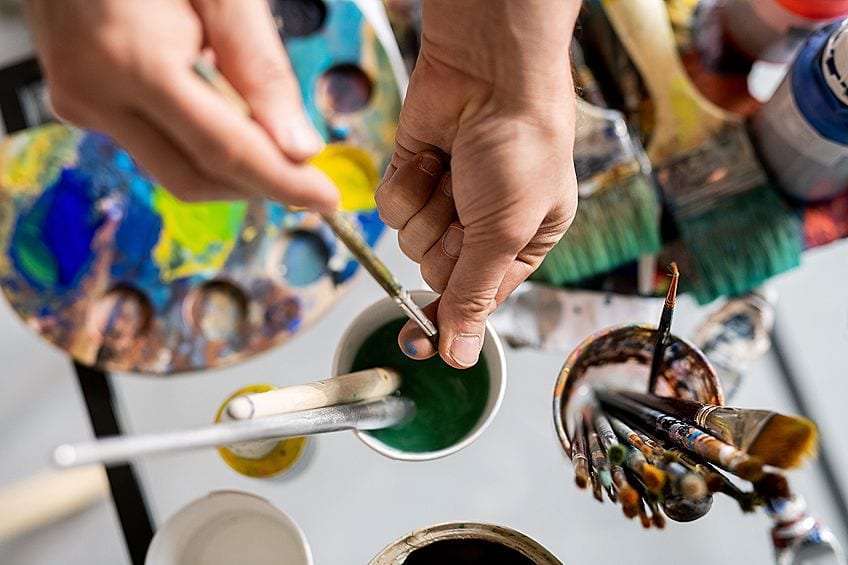
Cleaning Oil Paint Brushes with Vinegar
Cleaning oil paint brushes with vinegar – can it be that simple? Yes, vinegar might be a great method of how to clean dried paint brushes. Vinegar is cheap and you should have some already somewhere in your kitchen cupboard. The process is fairly simple and is as follows:
- Pour some white spirit vinegar into a pot and heat. You can also heat in the microwave. The vinegar must be hot, not just warm.
- Pour it into a bowl or container and place the brushes in the vinegar. Try to hang the brushes so that nothing is touching the sides. This is to prevent the brushes from getting out of shape
- Leave for 20 minutes or wait for the paint to soften.
- Once they have soaked, rinse the brushes in some soap and water. Rinse properly to get rid of all the soap and paint – you can also use your fingers to gently remove any paint.
- You might have to repeat the process if necessary.
- Gently reshape the brushes and allow them to dry on a flat surface or hang the brushes up.
Clean oil Paint Brushes with Citrus Thinner
This product is made from extracting citrus oil and mainly comes from the juicing factory industry and its waste. The peel usually gets thrown out, but to prevent wasting this part, the citrus oils are extracted from the peel. It is then mixed with isoparaffin to make the citrus thinner. Even though it is non-toxic, it may cause skin irritation in some individuals. So, whenever working with any type of solvent, even if it is natural, remember that safety comes first. The method for cleaning oil paint brushes is the same as you would do when using mineral oil.
Overview of Methods for the Best Way to Clean Paint Brushes
Here you will get an overview of the materials and their toxicity and flammability:
| Paintbrush Cleaner | Toxicity | Flammability | Odor |
| Turpentine | High | Highly Flammable | High (there are odorless options) |
| Paint Thinners | High | Flammable | High |
| Mineral Spirits | Low with fewer Volatile Organic Compounds (VOCs) | Flammable | Low to none |
| Linseed Oil | Non-toxic | Flammable if left on rags or cloth exposed to oxygen | Low to medium |
| Baby or mineral oil | Non-toxic | Non-Flammable | Odorless |
| Vinegar | Non-toxic | Non-flammable | Low odor |
| Citrus Thinner | Non-toxic (depending on the product) and biodegradable | Flammable | Citrus odor |
Here is the overview of the uses, costs, and how to dispose properly.
| Paintbrush Cleaner | Uses | Cost | Disposal |
| Turpentine | Paint cleaner; can remove dried paint and is more effective than mineral spirits | More costly than mineral spirits | Hazardous Waste – use local disposal site. |
| Paint Thinners | Paint cleaner (fresh paint) and paint thinner | Cheaper than mineral spirits | Use local disposal site |
| Mineral Spirits | Paint cleaner (fresh paint); more effective than other paint thinners | More expensive than paint thinners but cheaper than turpentine | Use local disposal site |
| Linseed Oil | Painting medium and as a brush cleaner | Affordable | Handle as with hazardous waste |
| Baby or mineral oil | Paint brush cleaner; wood Finish | Cheap | Do not throw down the drain; use local disposal site |
| Vinegar | Many household uses, including paint cleaner and window cleaner | Cheap | Can dispose |
| Citrus Thinner | Paint thinner, cleaner, and degreaser | Fairly expensive | Safe for the environment |
Oil Paint Brush Cleaner Product Recommendations
Many of the oil brush cleaner methods use products you can easily find around the house. However, we have provided a few product recommendations that will hopefully help you to decide on what to purchase for cleaning oil paint brushes.
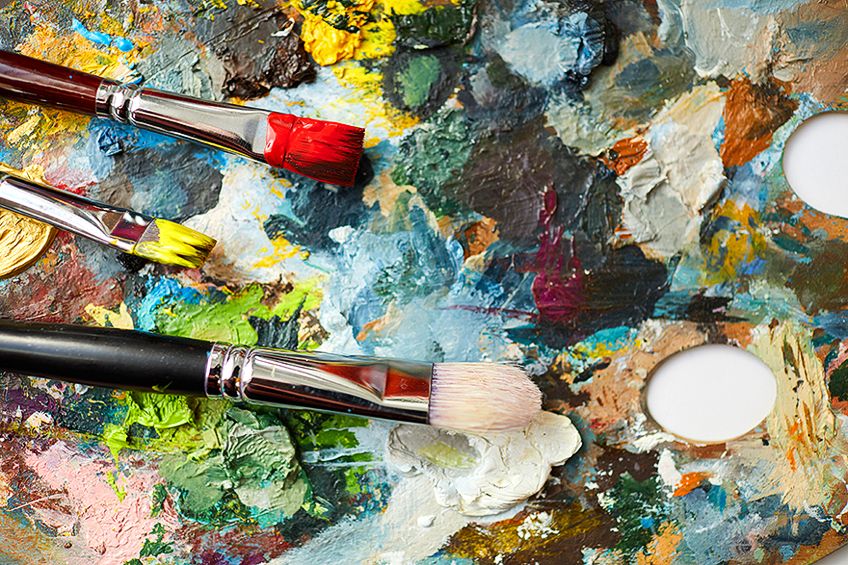
Best General Brush Cleaner: GENERAL PENCIL Brush Cleaner
This brand of brush cleaner is non-toxic and will work on oil paints, acrylics, as well as watercolor paints. The brush cleaner can even soften hardened paint and restore the brush to its original state. This isan easy-to-use oil brush cleaner with step-by-step instructions on the label. The lemon scent is also pleasant to work with.
- Maintain brushes with this lemon-scented cleaner and preserver
- Even old, hardened, oil paint brushes may be restored
- Non-toxic, water-soluble cleaning compound works safely
PROS
- Pleasant scent
- Easy and versatile use
- Can help soften hard paint
- Affordable
CONS
- Works better as a brush conditioner than cleaner
Best Paintbrush Tool: WARNER Brush Spinner
This paint brush spinner is a great tool for helping to spin any excess paint and water out of your paintbrush. All you have to do is place the end of the brush into the brush grippers, dip the brush, and then use the spin handle to quickly clean the brush. This will help to extend the life of your paint brush by making cleaning a simple process.
- Remove excess paint from brushes or rollers with ease
- Simply insert brush into grippers, dip in solvent, and spin
- Extend the life of your brushes or rollers by cleaning between use
PROS
- Easy to use
- Quickly and effectively cleans brushes
- Durable tool
- Affordable
CONS
- Can make a mess if not kept in a bucket
Best Odorless Paint Thinner: SUNNYSIDE Paint Thinner
The Sunnyside Odorless Paint Thinner is safe enough to use inside and comes at an affordable price. It is completely odorless and is used mainly as a paint thinner for oil paints, varnishes, stains, and primers. It is therefore easy to use as a paint brush cleaner.
- Completely odorless solvent for thinning oil-based paints
- May also be used to remove and dissolve grease, grime, and oil
- Excellent for use indoors, especially when requiring odorless thinner
PROS
- Effective paint brush cleaner
- Can be used indoors
- Used for dissolving grease, oil, and grime
CONS
- Difficulty opening the cap
- Toxic (not for sale in California)
- Cannot be used with water-based latex paints
Best Eco-Friendly Solvent: Citrus Solvent
The Real Milk Paint Company Citrus Solvent is easy to use, thick, and has a pleasant citrus odor. The citrus solvent works similarly to mineral spirits when it is used as a paintbrush cleaner. The citrus thinner evaporates more slowly than conventional paint thinners and is safer to use when it comes to fumes.
- A biodegradable solvent made from the rind of an orange peel
- Low in toxicity, pleasant odor, eco-friendly, and easy to use
- Has other uses like degreasing and de-waxing
PROS
- Environmentally safe
- Low in toxicity
- Has other uses like degreasing and de-waxing
- Pleasant odor
- Easy to use
CONS
- Dries slowly
- Fairly expensive
Paint Brush Cleaner Tips
When it comes to good quality brushes, you want to make sure you look after them so that they can be used for a long time. Here are a few paint brush cleaner tips you might need to know and some that might help keep your paintbrushes in even better shape.
- Keep brushes standing upright, flat, or hanging to avoid bending them out of shape.
- Never place a paintbrush on its head.
- Never over-wash natural bristle brushes, and condition them with a brush dip conditioner.
- When storing, replace the brush packaging or wrap the brush in a thick paper to help keep the brush shape.
- Do not store brushes in direct sunlight.
- Try not to use hot water when cleaning your brush, as the glue that holds the ferrule can break down. Rather use warm water, as cold water could also make brushes stiff.
- When using solvents, always do so in a well-ventilated space and wear gloves and a mask.
- Shellac remover, acetone, and lacquer thinner should not be used to clean brushes.
- Remember to re-shape your brush once cleaned.
- Use a paintbrush spinner for better cleaning results.

Frequently Asked Questions
Is Cleaning Oil Paint Brushes with Vinegar Possible?
Yes, cleaning oil paint brushes with vinegar is possible. It is a safe and non-toxic option; however, it might not be as effective as a solvent.
Can You use Coconut Oil as a Paint Brush Cleaner?
You can use coconut oil and other vegetable oils to clean paintbrushes. Remove excess paint and then dip into or rub some oil onto the bristles. Wipe and repeat if necessary, then wash with some soap and water.
What Happens if You Clean Oil Paint Brushes Using Water?
Oil and water do not mix, so using only water to clean brushes will not work. You need to at least use a bar of soap to remove the oil and wash it away.
Are Mineral Spirits and Turpentine the Same Product?
No, they are not the same. Turpentine is made through a distillation process from pine trees, while mineral spirits are petroleum-based.
Are Paint Thinner and Mineral Spirits Similar?
Unblended and pure mineral spirits can act as a paint thinner, but paint thinner itself can be a combination of several blended products. So, a paint thinner is not one specific product, but is more of a description of what the product does.
How to Clean Dried Paint Brushes?
You might have to use mineral spirits and soak the brushes. You can also use vinegar as a non-toxic option. The best option is to clean your brushes immediately after you have used them.
Larissa Meyer is a 32-year-old mother from Michigan and creative spirit since childhood. Her passion for painting and drawing has led her to an education as an illustrator and a career as a freelance graphic designer. She has a Bachelor of Fine Arts in Illustration and a degree in Graphic Design. Larissa is a talented artist who is able to master a wide range of styles and techniques to bring her artistic vision to life. Her greatest passion is currently fluid painting and epoxy resin art. Larissa’s love for art and her knowledge and experience in illustration make her the perfect Creative Director for our fluid-painting.com team. She is the creative head of our team and shares her passion and knowledge with our community through articles and tutorials.
As a mother of a 2-year-old daughter, Larissa also understands the importance of fostering creativity in early childhood. She uses her experience and knowledge to help other parents inspire their children and develop their artistic skills as well.
Learn more about Larissa Meyer and about us.









